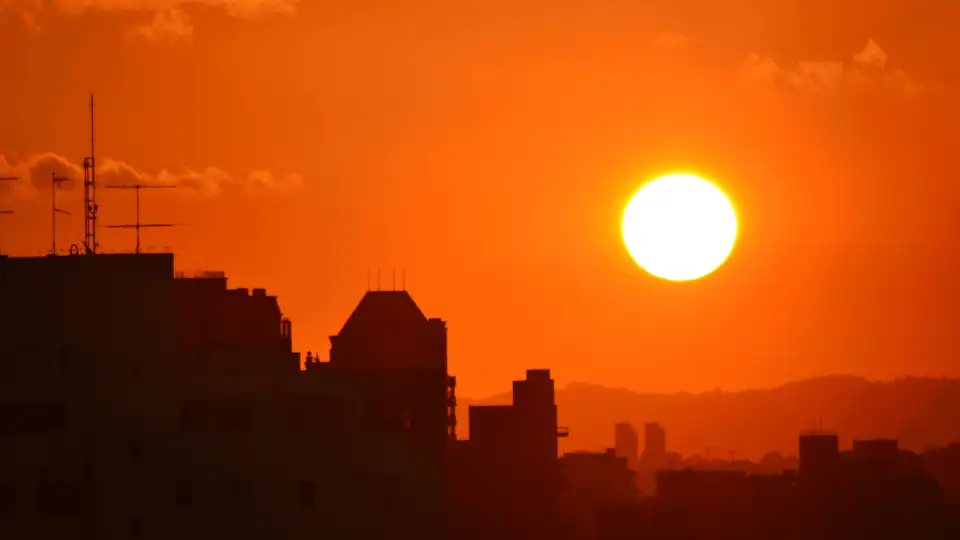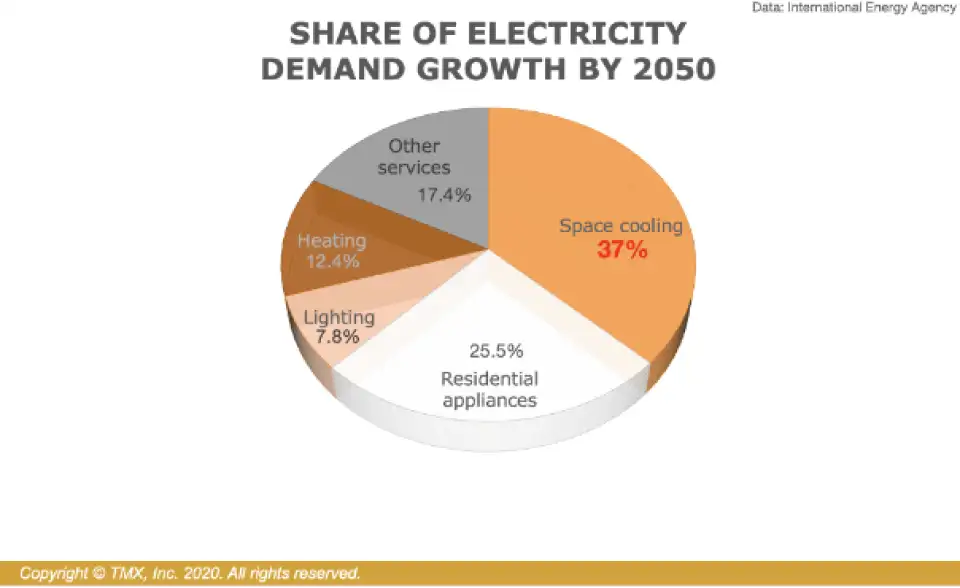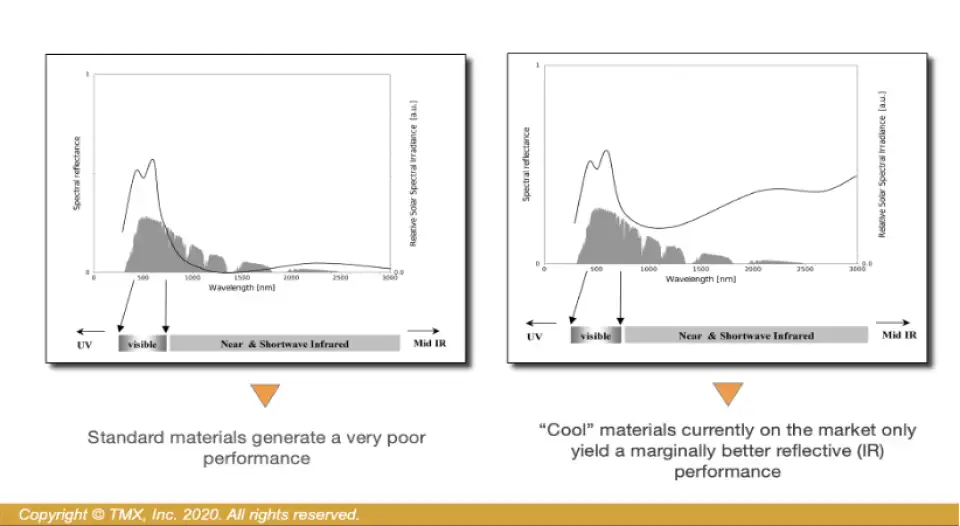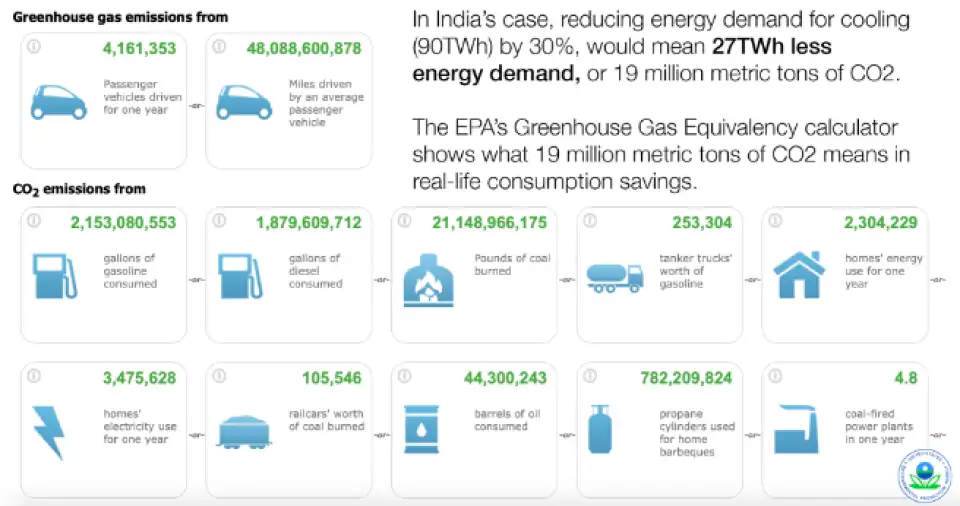
Around the world, temperatures are rising, not just because of global warming, but also due to how and where we build. One of the reasons we can live in otherwise uninhabitable areas is the invention of air-conditioning, which allows us to modify our indoor spaces, making our lives not only comfortable, but possible. Heat kills more than five million people per year, and climate change is worsening the problem. According to the latest studies, countries in South America, the Caribbean, Southeast Asia, and Africa have the greatest percentage of heat-related deaths caused by climate change. Billions of people do not have the luxury of air conditioning, particularly in the hottest regions of the world, which tend to also have the highest populations.
Take India and Southeast Asia, for example, where air-conditioning is becoming a necessity. In Bihar, India schools closed due to unsafe temperatures in 2019, a record-breaking year for temperatures and the same happened for 250 schools in Malaysia in 2016, another record-breaking year. Heat waves cause more deaths than all-natural disasters combined in many countries, including the United States. Schools from Maine to Hawai’i now have “heat days” when they must close because their indoor temperatures are simply too high for safety. While the stories of developing countries’ plight rarely reach our eyes and ears in the west—though, the problem is much more dire there—in the U.S. the debate about when it’s too hot to keep schools open is returning year after year.
The share of electricity dedicated to cooling worldwide will reach 37% by 2050, according to estimates by the IEA and McKinsey. That energy use is a major hindrance for tackling global climate change since conversion to renewable energy has lagged behind a transition to gas, while oil- and coal-powered plants continue to be the main energy sources, particularly where the demand is and will be greatest. Finding ways to adapt our built environments to adjust to more extreme temperatures is of paramount importance to guarantee a safe, livable future.

Future adoption of air conditioning technology where temperatures become life-threatening will likely make the problem worse for urban living. Here’s the catch with modern air-conditioning: cooling the indoors warms the outdoors, as ACs emit warm air—contributing to the heat island effect—and also require enormous amounts of energy that most grids are simply not equipped to provide, whether you’re in Bombay, Beirut, or Houston, as proven by recent failures.
The energy that powers our air-conditioning is still generated primarily from fossil fuels, trapping us in a vicious feedback loop. As people gain access to AC, energy consumption goes up, and with it greenhouse gases increase in the atmosphere, which means more warming, which in turn means we need to rely even more on AC. According to the International Energy Agency, air-conditioning and electric fans combined currently account for 20% of energy used in buildings globally. Their analysts expect this to triple in the next 30 years. Current AC energy consumption is primarily in wealthier communities in developed countries, while people in impoverished regions suffer dire consequences like heat strokes, exposure, and death due to their state of energy poverty.

We must adopt an innovative and rapid solution to this global problem, using Passive House building methods and retrofitting our existing shelters, however simple they may be. Studies have shown that existing “cool roofing products” have a significant effect on reducing the amount of solar heat absorbed by buildings, and thus reducing indoor temperatures. A great improvement in this type of passive technology is TMX’s Heat Abatement Technology or HAT, a newly patented nano-engineered material that adheres to the outside of existing buildings and reduces their heat absorption.
This has a remarkable impact in confronting the manmade, vicious energy loop: HAT consists of tiny particles with electromagnetic spectral properties, scientifically calibrated to reflect sunlight away from roofs and exterior walls, working similarly to physical sunscreen. When solar radiation strikes a roof covered with TMX’s material, it reflects back into the sky with much higher efficiency than all current materials on the market. Studies show that these materials also improve the “heat island” effect.


Surfaces covered with TMX’s Heat Abatement Technology absorb up to 30% less heat, requiring less AC use to cool indoor spaces, ultimately driving down energy demand, costs, and greenhouse gas emissions.
Residential, commercial, and industrial buildings consume about 40% of all energy used worldwide. Passive House provides a vital intervention by increasing the energy efficiency of the buildings, and HAT is a complement to that impact. The technology is applicable to new and existing buildings with marketability in the regions where an increase in building overheating is expected, India, Southeast Asia, and China. For India alone, if implemented widely, 30% less energy demand would mean five fewer coal-fired power plants, or 44 million fewer barrels of oil burned, or 100,000 fewer rail cars of coal used for energy production (data from the EPA). For climate, it would mean 19 million fewer metric tons of CO2 in the atmosphere.

All the heat we’ve baked into our futures will have a cost, but with applied smart technologies, we can begin to address the problem.
Featured photo above by form PxHere